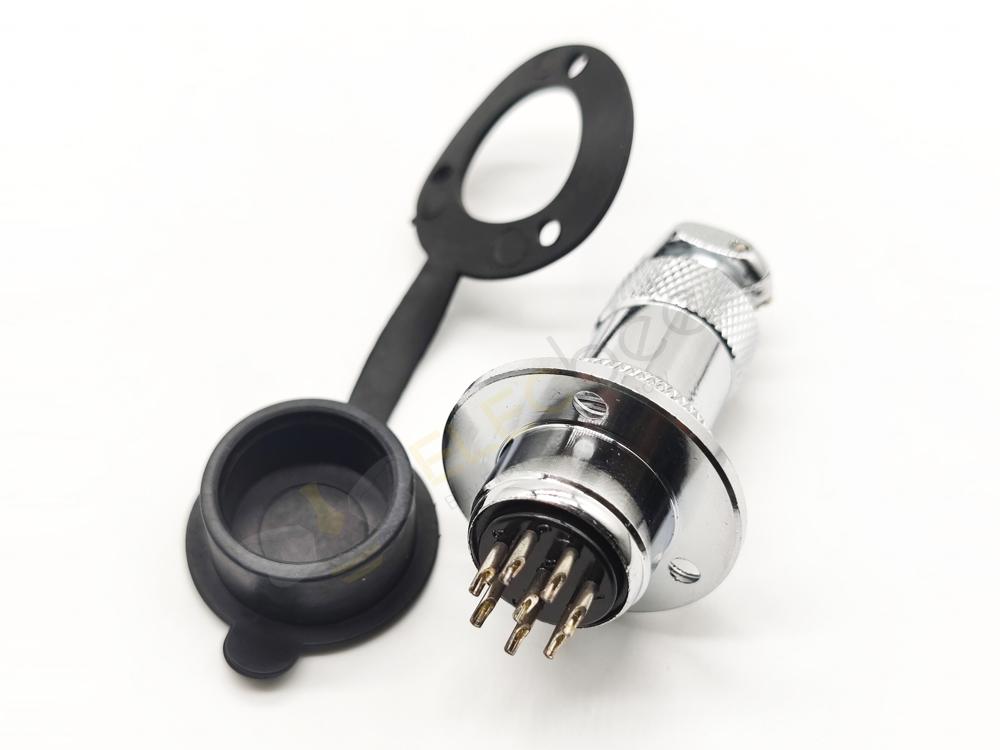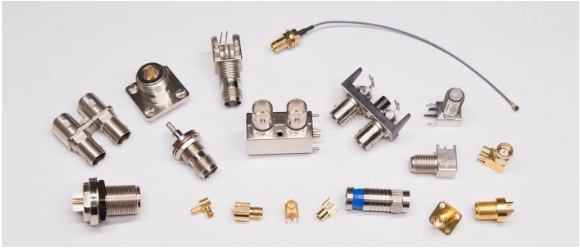Definition of connector
A general term for connecting two or more circuit devices. As an electromechanical component, connectors generally work in pairs and are divided into plugs (male) and sockets (female). It completes the connection and disconnection of electrical appliances through certain mechanical actions. Its main functions are:
Transmitting signals or transmitting electrical energy
Make or break a circuit
Classification of connectors
There are many ways to classify connectors, which we will focus on in this article. However, due to the different application directions of connectors, there are contact and non-contact types. For example, optical fiber connectors and electrical connectors are contact types, and proximity switches are non-contact connectors. ; There are also classifications of electrical and optical signals. Today we are mainly talking about contact connectors for electrical signals. Electronic connectors and their components are important supporting interface components in the equipment, scattered in various systems and parts of the equipment, responsible for the transmission of signals and energy. The quality of the connection is directly related to the safe and reliable operation of the entire system.
Various circuits are interconnected by electrical connectors, from high frequency to low frequency, from circular to rectangular, from high-current connectors passing hundreds of amperes to high-density connectors passing weak signals, from ordinary printed board connectors Almost all types of electrical connectors have been widely used in various system engineering, from special connectors such as quick separation and detachment, to ensure the normal performance of the complete functions of the equipment. To sum up, on the one hand, in the face of various types of application scenarios, the classification of industrial connectors is extremely complicated. Therefore, with the continuous advancement of technology, more and more connectors are used on the market, and the performance of different types of connectors is also very different. Manufacturers will use materials with different characteristics to design connectors according to the application environment. Ensure the stable and reliable use of the connector in different environments.

On the other hand, the reliability of the electrical connection directly determines the performance of the equipment system. The performance of electronic connectors is an overall performance evaluation. Unlike the connector terminals, the performance can be easily evaluated from the aspects of material, design, and process.
Although there are many types of connectors today, and the selection is a little troublesome for performance evaluation, the benefits of using connectors in equipment are obvious:
1. Improve the production process, the connector simplifies the assembly process of electronic products, and also simplifies the mass production process;
2. Easy to maintain and upgrade;
3. Improve the flexibility of design. The use of connectors enables engineers to have greater flexibility when designing and integrating new products and when composing systems with components. The number of wires at the connector end and the spacing of the wires make the connection more convenient and faster. It is these small details that can effectively reduce the volume of electronic products, and at the same time reduce production costs. It can be effectively used as a data line for transmission between moving main boards or between PCBs.
There are so many connectors, how to divide them?
For any molded product, connectors are essential, such as our commonly used USB, headphone jack, Ethernet interface, or our less common military custom interface. Therefore, based on a wide range of markets, connector classifications are also diverse.
1. According to the functions of the internal and external connections of electronic equipment, the interconnection levels are divided into 6 types:
A: Interconnection of components to packages;
B: The interconnection of the package to the circuit board;
C: board-to-board interconnection;
D: component-to-component interconnection;
E: Interconnection of components to input and output interfaces;
F: System-to-system interconnection.
2. Classification according to the type of transmission signal:
A: Power connector (transmitting power);
B: signal connector (transmission signal);
C: High frequency connector (transmitting data).
3. Classification according to electrical requirements:
A: Universal connector;
B: high power connector;
C: high voltage connector;
D: pulse connector;
E: low noise connector;
F: phase modulation connector;
G: Precision coaxial connector.
4. Classification according to working frequency:
High Frequency Connectors, High Frequency Coaxial Connectors, Video Connectors, Coaxial Converters, Impedance Converters, Mating Size Converters, Gender Converters, Microstrip-Coaxial Converters, Waveguide-Coaxial Converters, Matching Load connectors, low frequency connectors, printed board connectors, ribbon cable connectors, integrated circuit connectors, mixed connectors, etc.

5. Classification according to environmental conditions:
A: sealed connector;
B: High water pressure seal connector;
C: high vacuum sealed connector;
D: Three-proof connector;
E: Radiation resistant connector;
F: high temperature connector;
G: Cryogenic connector.

6. Classification according to shape:
Circular connectors, mostly used in military equipment; (connection forms mainly include bayonet (fast), thread, automatic locking, push-pull, straight plug, etc.)
Rectangular connectors are widely used and develop rapidly. Many board-level connectors are rectangular connectors. (There are generally two types of connection methods for plugs and sockets: straight plug and straight plug and screw lock.)
7. Classification according to application direction:
A: RF connector;
B: fiber optic connector;
C: Non-contact connector (such as proximity switch, etc.)

The above classifications are all based on external or application attributes, and each manufacturer is different. Although NEDA has formulated a classification standard for connector component packaging, with the advancement of technology, connector classification has become more complicated. However, in terms of communication connectors, because of the cooperation of software protocols, there are indeed few and can be effectively distinguished.
A. Multi-wire cable connectors, including DB connectors, DIX connectors and DIN connectors.
B. Twisted pair connectors, including RJ45 and RJ11 connectors;
C. Coaxial cable connectors include T connectors, BNC connectors and terminal resistors.
Elecbee is a company specializing in the research and development, production and sales of electronic connectors, adapters and antennas. Whether it is technology, research and development, production or business, it is in the leading position in the industry. If you want to know more about our products or need related help and support, you can directly communicate with our technical staff in real time on the website or send an email to service@elecbee.com. All Elecbee staff look forward to cooperating with you.

